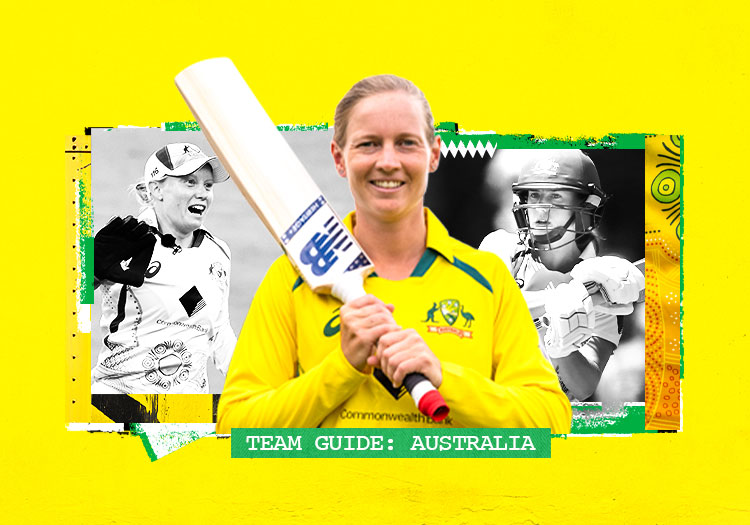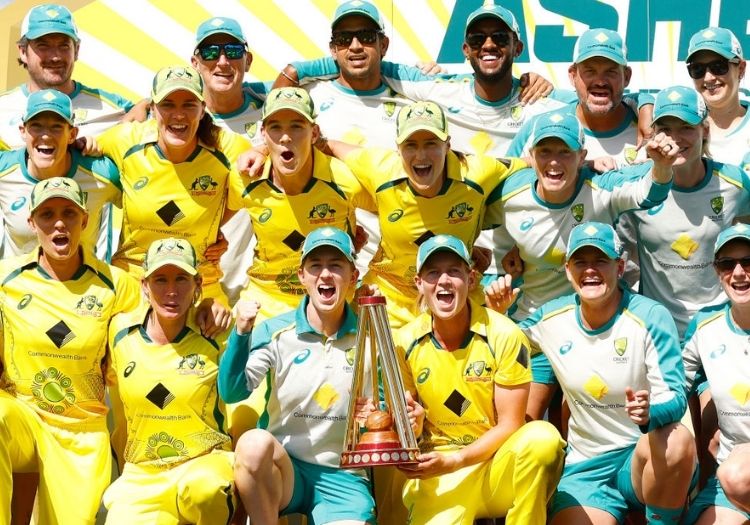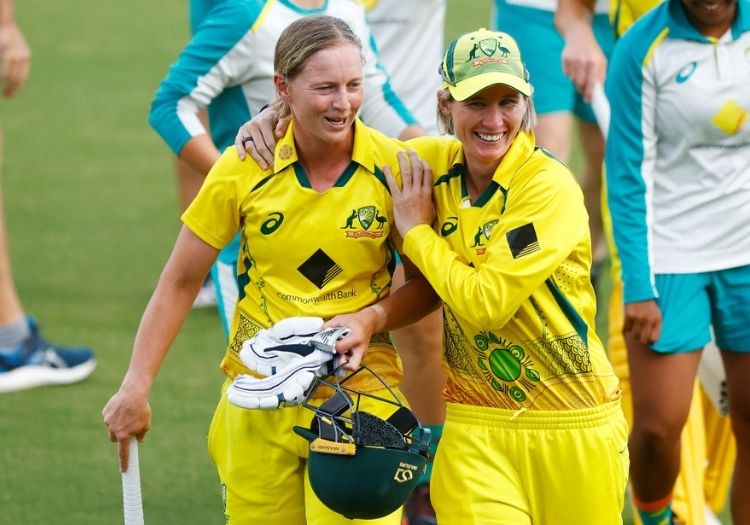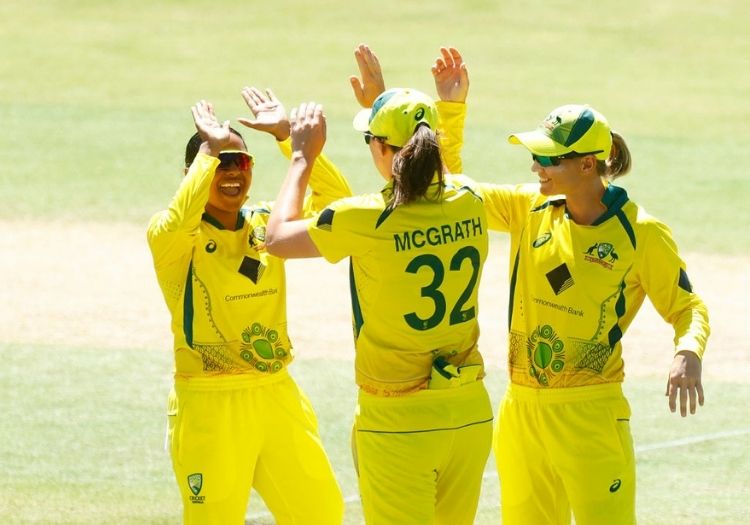Meg Lanning's team are perhaps heavier favourites for an ICC event than any side since Ricky Ponting's before the 2007 World Cup

Coach: Matthew Mott
The former Victoria and Queensland batsman and New South Wales and Glamorgan coach came into the role in mid-2015, replacing Cathryn Fitzpatrick. It has been a tenure of two halves in major tournaments: unexpected defeats in the 2016 World T20 and 2017 World Cup; then domination in the 2018 and 2020 T20 World Cups. Mott is also undefeated in Ashes series.
But coaches don’t take the field, and with their domestic structure and funding Australia are expected to win every series they play, meaning the gap between success and failure is a narrow one.
“I said all we want is a one-pager,” Mott said of the team’s post-2017 World Cup debrief. “We don't want any more fluff. We just want one page that we can live by, we can hold each other to account on. They came back with a fantastic document, very succinct, and we've lived and breathed that since then. Probably the one [value] that gets the most airplay is ‘fearless’ and that came out of that semi-final. I don’t think anyone went out there to lose the game but, when we were challenged, we took a step back and so part of what we try to do is enable each other to make mistakes, be prepared to put it on the line and if it doesn't come off, that’s okay.”
If Australia don’t win this one after seven years of heavy investment it really might be curtains for Mott.
Captain: Meg Lanning
When Jodie Fields succumbed to injury back in 2014, Lanning was catapulted into the Australia captaincy aged just 21, to the frustration of the vice-captain Alex Blackwell, who thought she had earned a few years in the job.
Blackwell’s recent autobiography revealed that psychological profiling was involved in selecting Lanning back then, and while the first few years of her tenure were rocky – inflexible tactics in the field were partly to blame for the losses in the 2016 World T20 final to West Indies and the 2017 World Cup semi-final to India – she has grown into the role. Lanning seems to be over the worst of her shoulder injury, allowing her to cement her position as probably the world’s best batter.
But… the way England got after Australia in the run-chase of the recent Ashes Test match should encourage all teams that Lanning still has vulnerabilities. She certainly could attack more in the field. But such are her resources, she probably doesn’t need to. If Australia win this tournament she will hold both World Cups and the Ashes. And she will have only just turned 30.

Australia are the hot favourites to win the World Cup
Superstars
A few years ago, Ellyse Perry might have been the only player to fall into this category, and while part of her superstardom might once have been about her physical appearance, she really did become the world’s best female cricketer. The whole rationale of Cricket Australia’s policy in promoting women’s cricket in recent years has been to raise a generation of players to the status of superstar.
Certainly Lanning is on a par with Perry’s status now, and the improvement in women’s pace bowling is being led by Tayla Vlaeminck and Darcie Brown.
Rising star
Tahlia McGrath showed flickers of talent in the Big Bash, but she seems to have made a giant leap forward over the last year. She was impressive against India before flattening England in the opening T20I of the Ashes with three wickets and 91 not out off 56 balls. She seems to have everything an allrounder needs, and Australia could be building their team around her for years.
Such is the depth of Australian women’s cricket that there are more of these rising stars not yet in the squad, such as the 19-year-old quick bowler Stella Campbell and the 18-year-old left-handed batter Phoebe Litchfield, who made consistent runs for Australia A against England A.
BATTING
Power hitters
Healy leads the assault against the new ball, and Ashleigh Gardner and McGrath add real punch in the middle overs. It should be stressed, though, that Australia will beat teams as much by through more polished and rounded batting than raw power. Actually some other teams have more big hitters.
Anchor
The two nuggety left-handers Rachael Haynes and Beth Mooney – who drops into the middle order in this format – provide the ballast, although Perry is fast falling into this category too.
Finisher
McGrath and Gardner are in the prime spots to fulfil this role, should it be needed. A lot of the time, it won’t, as Australia will be so far ahead of the game.
Problem areas
Healy’s form on both sides of the stumps has been patchy, but such is Australia’s overall strength that they are usually able to mask any errors. What they cannot afford is for any malfunction to come in a World Cup knockout game. There isn’t quite the depth in the batting as the bowling, but it will probably take a swathe of injuries or Covid cases for that to become a problem. Unlike England, for example, Australia do have left-handed batters, which arguably does bring opposition off-spinners more into the game. Australia do have flaws; it’s just other teams have much bigger ones.

Meg Lanning, left, captains the side
BOWLING
Speed merchants
A category which doesn’t apply to some teams, but it certainly does to Australia. They are without their fastest bowler, Vlaeminck, but Brown has stepped in smoothly to fill the strike role. Australia have so many options that Campbell hasn’t even made the squad. Megan Schutt bowls booming in-duckers, and Australia’s other seamers – Perry, McGrath and Annabel Sutherland – are more about swing and accuracy.
Variation
Australia have more meaningful variation than most teams. Australia lost their first-choice leg-spinner Georgia Wareham to a broken ankle, but such is their depth they have been able to pluck Alana King from the Big Bash, leapfrogging that tournament’s leading wicket-taker, Amanda-Jade Wellington, in the process. King, who really does turn it, is likely to pair the orthodox left-arm Jess Jonassen, especially since Sophie Molineux is also injured. Ashleigh Gardner bowls more hittable off-spin. The absence of Lauren Cheatle means no left-arm seamer, but it probably won’t matter.
Problem areas
Assuming they are still in the contest, batting teams may well look to target Australia’s change seamers – Sutherland and Nicola Carey – who look easier to line up than the other bowlers. Having said that, in the night games with a bit of dew around Carey’s low trajectory could end up being a weapon.

Alana King is one of the spin options for Australia
FIELDING
Gun fielder
At times it seems as though Carey makes the XI mainly on account of her energetic ground fielding. Lanning showed herself a fine slip catcher in the Ashes Test match, but due to the surfeit of white-ball matches in women’s cricket it’s a skill not tested frequently enough.
Who takes the gloves?
Healy is the fulcrum of the side, though there is a legitimate point to be made about whether opening the batting and keeping for 50 overs is asking a bit much. She is a great competitor and reader of the game, though not the tidiest keeper in women’s cricket and prone to the odd mistake. If things do really go awry Mooney also keeps wicket, with Georgia Redmayne among the reserves.
Squad: Meg Lanning (c), Alyssa Healy (wK), Darcie Brown, Nicola Carey, Ashleigh Gardner, Grace Harris, Rachael Haynes, Jess Jonassen, Alana King, Beth Mooney, Tahlia McGrath, Ellyse Perry, Megan Schutt, Annabel Sutherland, Amanda-Jade Wellington. Reserves: Hannah Darlington, Georgia Redmayne
Fixtures: Mar 5 – England, Mar 8 – Pakistan, Mar 13 – New Zealand, Mar 15 – West Indies, Mar 19 – India, Mar 22 – South Africa, Mar 25 – Bangladesh
Possible starting XI: Haynes, Healy (wk), Lanning (c), Perry, Mooney, McGrath, Gardner, Jonassen, King, Schutt, Brown
OTHER TEAM GUIDES (open in external window in app)